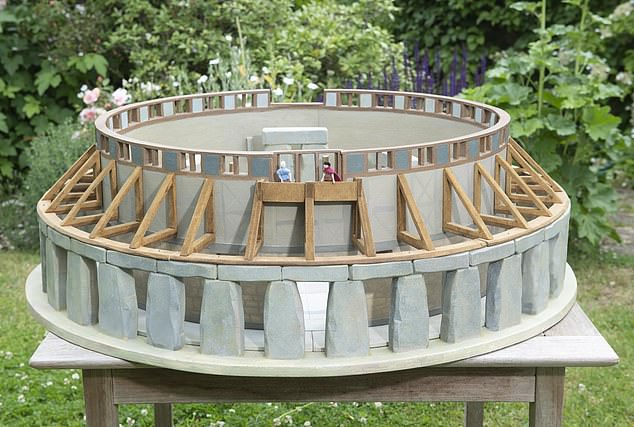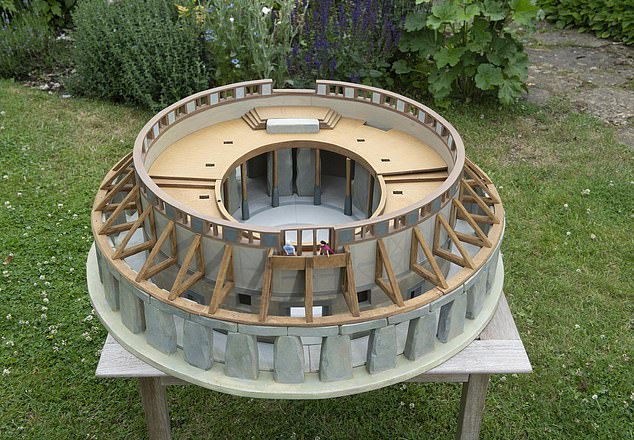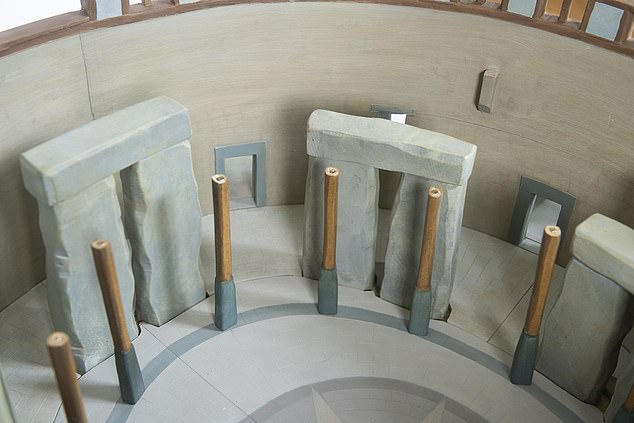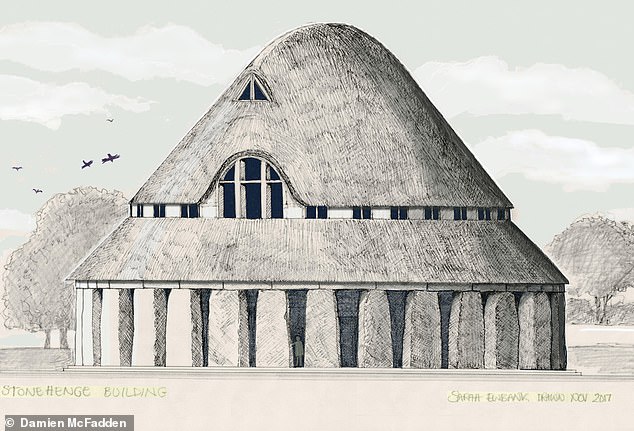Stonehenge - the rock venue! Architect's concept that the famous stones were simply the base for a vast Neolithic temple is brought to life by mesmerising models
Landscape architect Sarah Ewbank believes Stonehenge once had thatched roofSarah believes iconic Salisbury monument was an all-purpose Neolithic temple
After making models, the architect believes it had a large oval hall overlooked by galleries in which the crowds might have gathered to hear the speakers below
By DAVID LEAFE FOR THE DAILY MAIL
2 July 2021
One of the biggest mysteries surrounding Stonehenge is how any of it is still standing, given the predations of souvenir-hunters and vandals including the great 17th-century architect Sir Christopher Wren.
He paid many visits to the ancient monument on Salisbury Plain and his surname can still be seen carved on one of its stones.
The Victorians were even more destructive, renting chisels to visitors so they could take great chunks of Stonehenge home, and over the centuries farmers purloined stones for building their barns.
Perhaps they might all have had more respect for the monument, now a Unesco World Heritage site, had they heard the extraordinary theory being put forward in a new book by 62-year-old landscape architect Sarah Ewbank.
She would have us believe that the Stonehenge we see today represents the ruins of a majestic building which once had a spectacular thatched roof.

Landscape architect Sarah Ewbank believes Stonehenge (pictured) once had thatched roof
As mind-boggling as contemplating an upright Tower of Pisa or a Day-Glo Taj Mahal, this may seem as barking as other ideas expounded about Stonehenge over the centuries: that its layout was based on the female private parts, or that it was a site of human sacrifice or a landing pad for aliens.
But Sarah is deadly serious, and she backs up her arguments with the rather ferocious electric saw she keeps in the garage of her pretty Cotswolds cottage near Lechlade, Gloucestershire.
The feisty grandmother does not use this to intimidate those who disagree with her — although she is rather frustrated with the academics who have repeatedly refused to engage with her idea that Stonehenge was a Neolithic version of the Royal Albert Hall.
No, the saw is used to fashion ever-more detailed models of how she thinks Stonehenge might have looked. Each has taken about two months to complete and they have got bigger each time.
While three earlier models have been banished to the attic, version four is currently taking pride of place in the dining room.
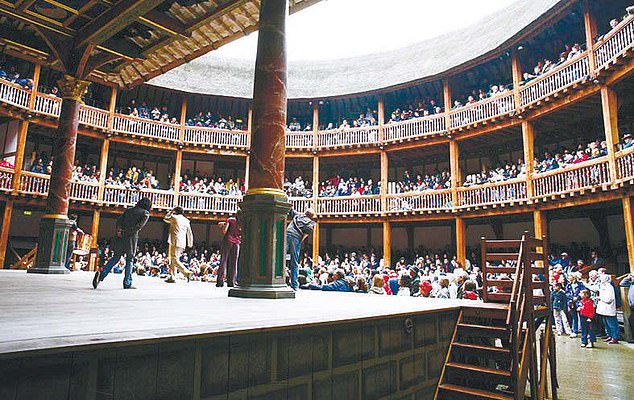
Sarah points out that Stonehenge has a total diameter — some 30 metres — which is almost exactly the same as Shakespeare’s Globe (pictured), a very similarly thatched building
Built on a scale of 1:33, it is surprisingly persuasive. The moment you see the familiar stone slabs as the supports for an upper storey you think ‘Ah, yes, of course it was a building. What else could it have been?’
As to what kind of building, Sarah thinks it was an all-purpose Neolithic temple with a large oval hall overlooked by galleries in which crowds might have gathered to hear speakers below.
She points out that the total diameter — some 30 metres — is almost exactly the same as Shakespeare’s Globe, a similarly thatched building in which, several millennia later, the human voice could carry to every audience member.
‘It is unquestionably the right size for an enclosed public venue,’ she says, speculating that the scenes at Stonehenge might have been as boisterous as in Elizabethan times.
‘Maybe there was feasting in the galleries, with dancing and musicians playing below, or perhaps ceremonies took place to welcome in the solstices. It all sounds rather splendid.’
It does indeed, and Sarah contends that archaeologists have under-estimated our Neolithic and Bronze Age forebears who built Stonehenge over centuries, years starting around 5,000 BC.
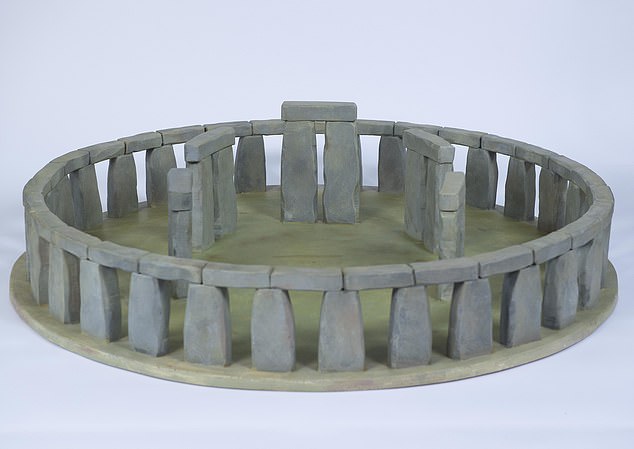
Building blocks: the basic structure which can be deduced from what is left to this day
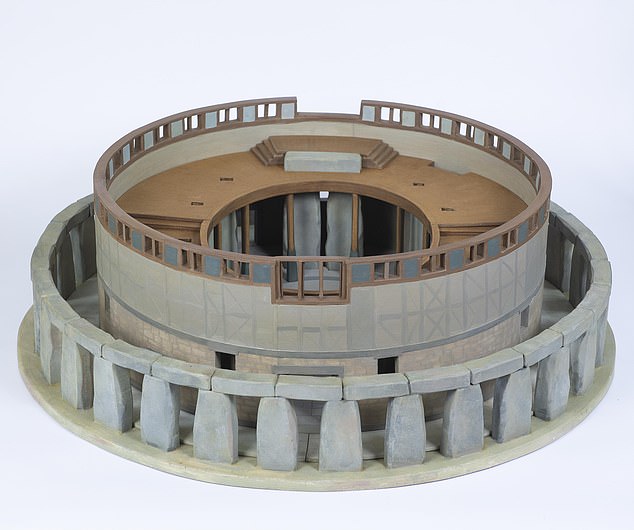
Layers upon layers: architect Sarah Ewbank's theory has an inner wall and doorway
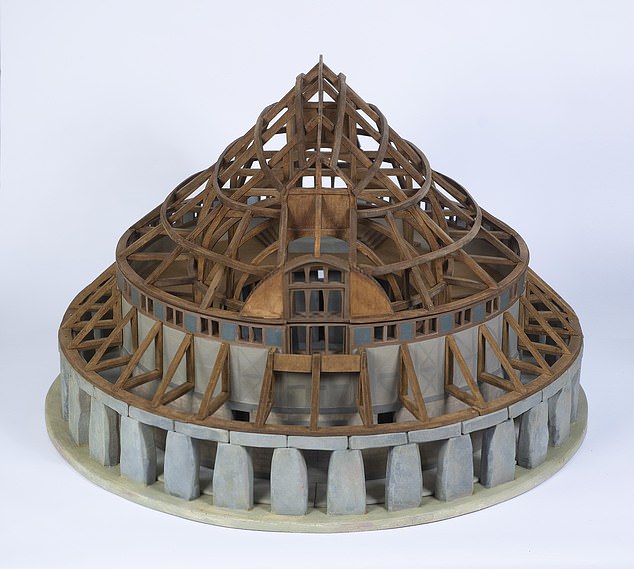
A giant roof: Sarah believes the monument took the shape of an all purpose Neolithic temple
